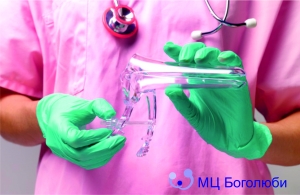Surgery to remove the uterus is called "uterine extirpation". This procedure is compulsory and is used only when other treatments have proved futile. It is performed using laparotomy or laparoscopically. During the operation, you can remove the appendages (fallopian tubes, ovaries), if there are indications.
Classification
The operation to remove the uterus depends on the degree of intervention and is divided into:
• supravaginal amputation;
• hysterectomy ;
• radical operation.
In the first case, the cervix is preserved. At a hysterectomy appendages are removed also. Radical surgery involves the removal of part of the vagina, the tissue that surrounds the uterus, lymph nodes.
When is it needed?
The decision on the need for uterine extirpation is made by a gynecologist. Indications for this are: malignant neoplasms ( cancer of the uterus and cervix); endometriosis with complications , adenomyosis , fibroids, uterine prolapse .
Laparoscopic uterine extirpation has a number of advantages. The aesthetic defect after it is insignificant, the intervention is performed through small (up to 1 cm) punctures, postoperative complications are minimal, due to low tissue trauma . The rehabilitation period after La paroskopichnoho intervention shorter than after operation carried lapar otomichnym way.
Hysterectomy in MC " Boholiuby " are highly qualified specialists. The operating room is equipped in accordance with modern standards. And therapeutic tactics are selected individually , taking into account the patient's height and weight, concomitant pathologies, the size of the affected area, etc.
H aslidky
Home Trans ah hysterectomy in removing problematic body. However, the patient will not be able to give birth anymore and the location of the organs in the pelvis changes slightly. Usually the recovery period does not require much time, provided that the operation is carried out in the base. If you suddenly experience pain or bleeding, you should seek medical attention immediately.
Anxiety is also a rise in temperature, urinary incontinence, suppuration of the suture, swelling of the inguinal lymph nodes.
Complications after extirpation often occur due to changes in the position of the intestines and bladder. These include:
• fistulas ;
• vaginal prolapse;
• chronic pelvic pain;
• enuresis.
After surgery, the manifestation of menopausal symptoms is possible. Menopause in patients who have undergone uterine extirpation occurs a couple of years earlier . If there was a hysterectomy , then there is a surgical menopause. And then a woman feels all the signs that are characteristic of normal menopause: emotional disorder, hot flashes, cardiovascular disorders, osteoporosis.
To mitigate the negative consequences of surgical menopause at znachayetsya Hormonal replacement therapy. Preparations of ECT Rogen or a combination hestani in and begin to take estrogen one month after surgery.
In addition, women should be aware of the fact that after hysterectomy can with ' appear problems in sexual terms - vaginal dryness and decrease in sexual desire in . However, contrary to popular belief, a woman's sexual life does not end after the removal of the uterus. After recovery, a woman can have a full sexual life. In some patients, on the contrary, the quality of sexual intercourse improves, because the pain passes and the volume of the abdomen decreases (when the fibroid is removed).
In some cases, if a woman has been diagnosed with a malignant neoplasm, radiation therapy is prescribed after uterine extirpation.
















